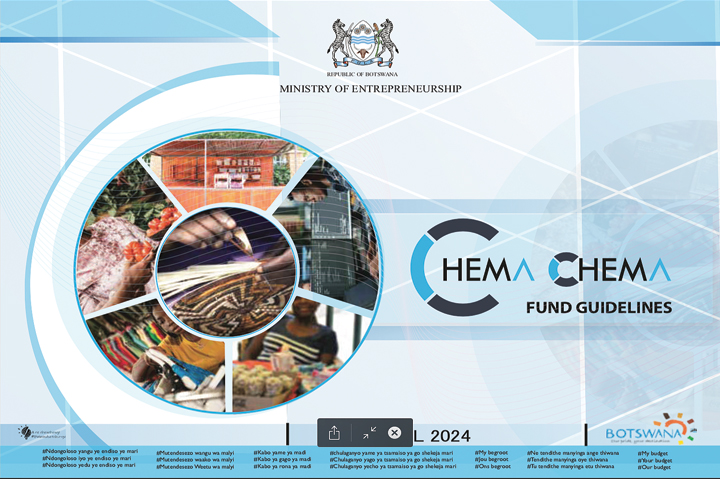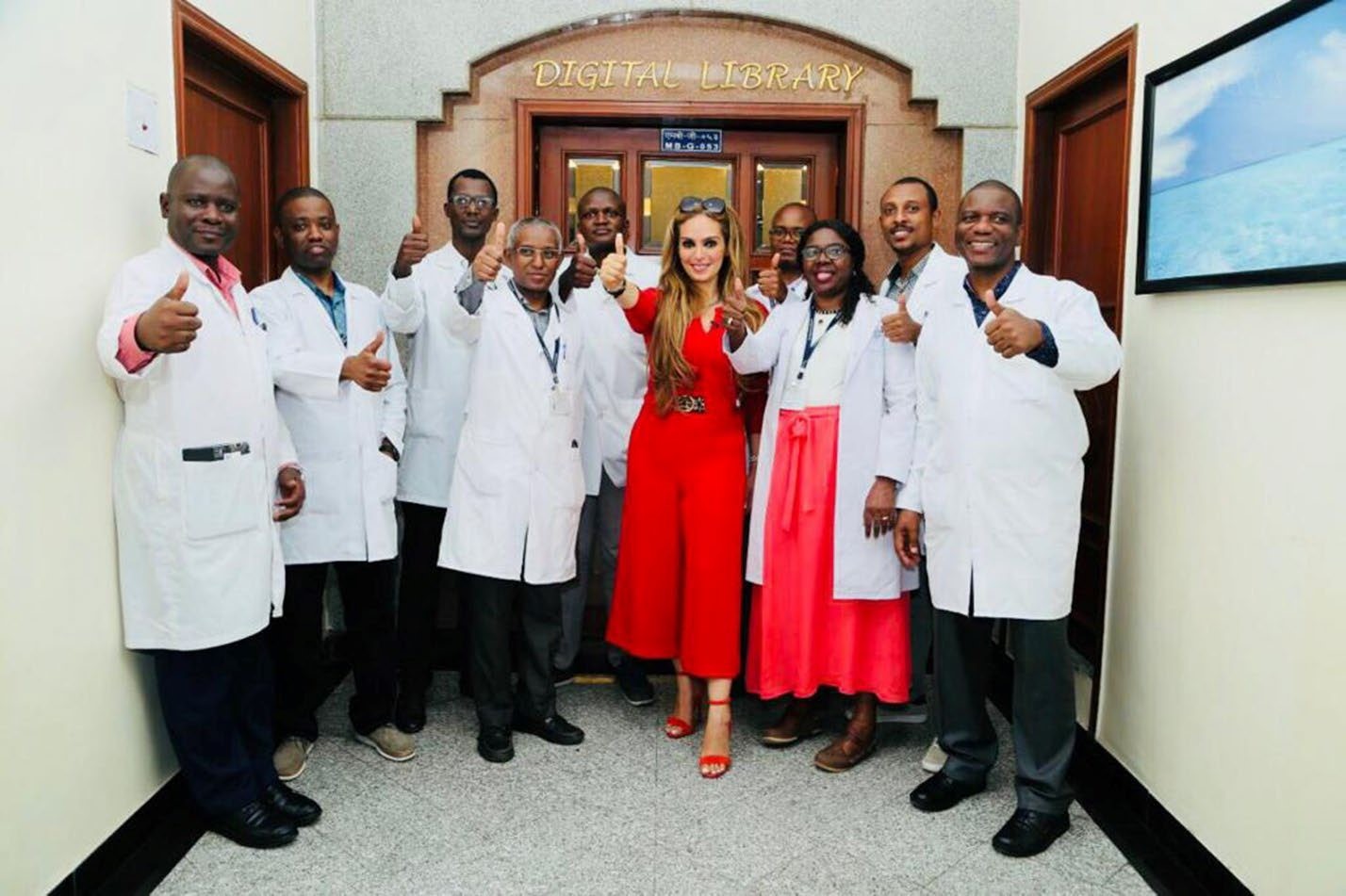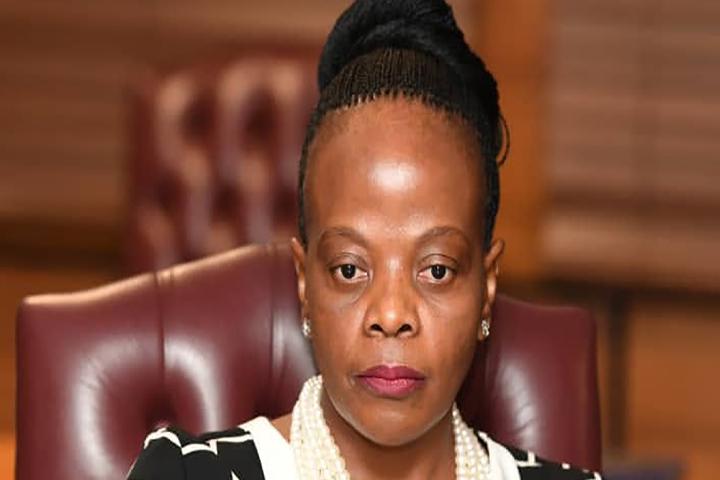Lesedi La Rona sold for over 500 million Pula
Canadian based Lucara Diamond Corporation earlier this week announced the successful sale of the historic 1,109 carat diamond, Lesedi La Rona for US$53 million to a London based British multinational jeweller.
The lucrative stone is the third-largest diamond ever found and was recovered from Karowe mine in Letlhakane in the Boteti District of Botswana in November 2015. Only the non-gem black Sergio and the gem-quality Cullinan are larger.
Reports from Lucara reveal that Lesedi La Rona was priced at US$47,777 per carat hence the US$53 million tag price which is equivalent to approximately over BWP 500 million. Laurence Graff of Graff Diamond was quoted by media reports as saying that his company was thrilled and honoured to become the new custodians of the stone. “The stone will tell us its story, it will dictate how it wants to be cut, and we will take the utmost care to respect its exceptional properties, this is a momentous day in my career, and I am privileged to be given the opportunity to honour the magnificent natural beauty of the Lesedi La Rona.”
President and Chief Executive of Lucara Diamonds, William Lamb observed that the discovery of the Lesedi La Rona was a company defining event. “It solidified the amazing potential and rareness of the diamonds recovered at the Karowe mine,” he said adding that his company took time to find a buyer who would take the diamond through its next stage of evolution.
After discovery the exact value of the Lesedi Larona could not be determined until it was decided how it will be cut and more details about its colour were known. Former diamond-mining geologist Phil Swinfen estimated based on other previous similar sales that the stone could be sold for $40–60 million adding that the process of selling and cutting the diamond would likely take years to complete. In May 2016, Sotheby’s announced in London that the Lesedi La Rona diamond would be offered in a stand-alone auction on 29 June 2016.
It was expected to sell for around $70 million. After closer examination, the diamond was presented at the auction as weighing 1,109 carats. At the public auction at Sotheby's on 29 June 2016, the highest bid for the diamond was $61 million. However, this bid fell short of the undisclosed reserve price and the stone was not sold. The bidding opened at $50 million and the auction lasted for less than 15 minutes.
Lukas Lundin, whose family is Lucara Diamond’s largest shareholder, noted that the commission arrangement with Sotheby’s meant the stone would have had to reach $150 million for the auctioneer to make a large profit. At the time, David Bennett of Sotheby’s had revealed it was the first time the company held an exclusive auction for one single object. It was preceded by the sale of three smaller rough diamonds. The stones were also from Lucara and the proceeds, $140,000, were donated to charity. The Constellation had been found the day after the Lesedi La Rona in the same section of the mine.
Lamb has exclaimed that the price paid was also an improvement on the highest bid received at the Sotheby’s auction in June 2016. He further noted that t Graff Diamonds is now the owner of the Lesedi La Rona as well as the 373 carat diamond, purchased earlier this year, which formed part of the original stone. “We are excited to follow these diamonds through the next stage of their journey,” Lamb was quoted as saying.
The Lesedi La Rona is a colourless/white type IIa diamond. It weighs 1,111 carats (222.2 g; 7.84 oz) and measures 65 mm × 56 mm × 40 mm (2.6 in × 2.2 in × 1.6 in). In comparison, the Cullinan, discovered in 1905 in South Africa, weighed 3,106.75 carats (621.350 g). The Lesedi La Rona was mined using Large Diamond Recovery ("LDR") XRT machines, and is the largest diamond recovered using machines for automated diamond sorting.
It is estimated to be over 2.5 billion years old. In the months after its discovery the diamond was exhibited in a world tour in Singapore, Hong Kong, New York, and Antwerp, Belgium, a major centre of the world diamond trade.
THE PROPOSED AMENDMENTS TO PRECIOUS STONES TRADE
The Diamond Industry is Botswana‘s largest economic sector contributing over 30 % to the country‘s GDP alone. Botswana is currently proposing an amendment to the Botswana Precious and Semi Precious Stones (Protection) Act, regarding the Botswana Government's right to purchase diamonds that are unusually large or have unusual features at market prices. If amended, the government will have the first option to buy ‘unusual’ diamond finds such as the historic Lesedi La Rona.
A recently filed draft bill to amend the Precious and Semi-Precious Stones Act contains a new clause that compels any producer that comes into possession of an unusual rough or uncut diamond to notify the minister of mines within 30 days, following which the government shall have the right of first refusal to the stone. “The price to be paid by government for a rough or uncut precious stone offered for sale by the producer shall be agreed between the parties in accordance with the current market price of the rough or uncut precious stone,” the bill states. The bill did not give a precise definition of “unusual”.
This move by Botswana is the latest in a series of similar measures by African countries such as Lesotho, Tanzania and Zimbabwe to exert tighter control on their mineral resources. With regards to this Chief minerals officer in the Ministry of Mineral Resources, Green Technology and Energy Security, Moses Tshetlhane said that amendment of the law was motivated by recovery of some unusually large diamonds, namely: the Lesedi La Rona and Constellation.
Some of the amendments to the Act include stiffer penalties for illegal trade of diamonds, as well as false declarations of discovery of precious stones. Producers that make false declarations about the place they would have discovered a precious stone should also be liable to penalties prescribed by law for a crime of perjury, and all rights acquired by them in consequence of any such declaration shall lapse.
“Some of the key changes to the Act are to remove trade barriers and increase penalties to deter any potential illegal trade as well as improve facilitation in the sorting, valuing, aggregation and selling of rough diamonds. The Precious and Semi-Precious Stones Act is being amended to ensure that it stays relevant and applicable to the prevailing and ever changing environment in the diamond industry,” shared the Chief Minerals Officer.
News
Nigerians, Zimbabweans apply for Chema Chema Fund

Fronting activities, where locals are used as a front for foreign-owned businesses, have been a long-standing issue in Botswana. These activities not only undermine the government’s efforts to promote local businesses but also deprive Batswana of opportunities for economic empowerment, officials say. The Ministry of Trade and Industry has warned of heavy penalties for those involved in fronting activities especially in relation to the latest popular government initiative dubbed Chema Chema.
According to the Ministry, the Industrial Development Act of 2019 clearly outlines the consequences of engaging in fronting activities. The fines of up to P50,000 for first-time offenders and P20,000 plus a two-year jail term for repeat offenders send a strong message that the government is serious about cracking down on this illegal practice. These penalties are meant to deter individuals from participating in fronting activities and to protect the integrity of local industries.
“It is disheartening to hear reports of collaboration between foreigners and locals to exploit government initiatives such as the Chema Chema Fund. This fund, administered by CEDA and LEA, is meant to support informal traders and low-income earners in Botswana. However, when fronting activities come into play, the intended beneficiaries are sidelined, and the funds are misused for personal gain.” It has been discovered that foreign nationals predominantly of Zimbabwean and Nigerian origin use unsuspecting Batswana to attempt to access the Chema Chema Fund. It is understood that they approach these Batswana under the guise of drafting business plans for them or simply coming up with ‘bankable business ideas that qualify for Chema Chema.’
Observers say the Chema Chema Fund has the potential to uplift the lives of many Batswana who are struggling to make ends meet. They argue that it is crucial that these funds are used for their intended purpose and not siphoned off through illegal activities such as fronting. The Ministry says the warning it issued serves as a reminder to all stakeholders involved in the administration of these funds to ensure transparency and accountability in their disbursement.
One local commentator said it is important to highlight the impact of fronting activities on the local economy and the livelihoods of Batswana. He said by using locals as a front for foreign-owned businesses, opportunities for local entrepreneurs are stifled, and the economic empowerment of Batswana is hindered. The Ministry’s warning of heavy penalties is a call to action for all stakeholders to work together to eliminate fronting activities and promote a level playing field for local businesses.
Meanwhile, the Ministry of Trade and Industry’s warning of heavy penalties for fronting activities is a necessary step to protect the integrity of local industries and promote economic empowerment for Batswana. “It is imperative that all stakeholders comply with regulations and work towards a transparent and accountable business environment. By upholding the law and cracking down on illegal activities, we can ensure a fair and prosperous future for all Batswana.”
News
Merck Foundation and African First Ladies mark World Health Day 2024

Merck Foundation, the philanthropic arm of Merck KGaA Germany marks “World Health Day” 2024 together with Africa’s First Ladies who are also Ambassadors of MerckFoundation “More Than a Mother” Campaign through their Scholarship and Capacity Building Program. Senator, Dr. Rasha Kelej, CEO of Merck Foundation emphasized, “At Merck Foundation, we mark World Health Day every single day of the year over the past 12 years, by building healthcare capacity and transforming patient care across Africa, Asia and beyond.
I am proud to share that Merck Foundation has provided over 1740 scholarships to aspiring young doctors from 52 countries, in 44 critical and underserved medical specialties such as Oncology, Diabetes, Preventative Cardiovascular Medicine, Endocrinology, Sexual and Reproductive Medicine, Acute Medicine, Respiratory Medicine, Embryology & Fertility specialty, Gastroenterology, Dermatology, Psychiatry, Emergency and Resuscitation Medicine, Critical Care, Pediatric Emergency Medicine, Neonatal Medicine, Advanced Surgical Practice, Pain Management, General Surgery, Clinical Microbiology and infectious diseases, Internal Medicine, Trauma & Orthopedics, Neurosurgery, Neurology, Cardiology, Stroke Medicine, Care of the Older Person, Family Medicine, Pediatrics and Child Health, Obesity & Weight Management, Women’s Health, Biotechnology in ART and many more”.
As per the available data, Africa has only 34.6% of the required doctors, nurses, and midwives. It is projected that by 2030, Africa would need additional 6.1 million doctors, nurses, and midwives*. “For Example, before the start of the Merck Foundation programs in 2012; there was not a single Oncologist, Fertility or Reproductive care specialists, Diabetologist, Respiratory or ICU specialist in many countries such as The Gambia, Liberia, Sierra Leone, Central African Republic, Guinea, Burundi, Niger, Chad, Ethiopia, Namibia among others. We are certainly creating historic legacy in Africa, and also beyond. Together with our partners like Africa’s First Ladies, Ministries of Health, Gender, Education and Communication, we are impacting the lives of people in the most disadvantaged communities in Africa and beyond.”, added Senator Dr. Kelej. Merck Foundation works closely with their Ambassadors, the African First Ladies and local partners such as; Ministries of Health, Education, Information & Communication, Gender, Academia, Research Institutions, Media and Art in building healthcare capacity and addressing health, social & economic challenges in developing countries and under-served communities. “I strongly believe that training healthcare providers and building professional healthcare capacity is the right strategy to improve access to equitable and quality at health care in Africa.
Therefore, I am happy to announce the Call for Applications for 2024 Scholarships for young doctors with special focus on female doctors for our online one-year diploma and two year master degree in 44 critical and underserved medical specialties, which includes both Online Diploma programs and On-Site Fellowship and clinical training programs. The applications are invited through the Office of our Ambassadors and long-term partners, The First Ladies of Africa and Ministry of Health of each country.” shared Dr . Kelej. “Our aim is to improve the overall health and wellbeing of people by building healthcare capacity across Africa, Asia and other developing countries. We are strongly committed to transforming patientcare landscape through our scholarships program”, concluded Senator Kelej.
News
Interpol fugitive escapes from Botswana

John Isaak Ndovi, a Tanzanian national embroiled in controversy and pursued under a red notice by the International Criminal Police Organization (Interpol), has mysteriously vanished, bypassing a scheduled bail hearing at the Extension 2 Magistrate Court in Gaborone. Previously apprehended by Botswana law enforcement at the Tlokweng border post several months earlier, his escape has ignited serious concerns.
Accused of pilfering assets worth in excess of P1 million, an amount translating to roughly 30,000 Omani Riyals, Ndovi has become a figure of paramount interest, especially to the authorities in the Sultanate of Oman, nestled in the far reaches of Asia.
The unsettling news of his disappearance surfaced following his failure to present himself at the Extension 2 Magistrate Court the preceding week. Speculation abounds that Ndovi may have sought refuge in South Africa in a bid to elude capture, prompting a widespread mobilization of law enforcement agencies to ascertain his current location.
In an official communiqué, Detective Senior Assistant Police Commissioner Selebatso Mokgosi of Interpol Gaborone disclosed Ndovi’s apprehension last September at the Tlokweng border, a capture made possible through the vigilant issuance of the Interpol red notice.
At 36, Ndovi is implicated in a case of alleged home invasion in Oman. Despite the non-existence of an extradition treaty between Botswana and Oman, Nomsa Moatswi, the Director of the Directorate of Public Prosecution (DPP), emphasized that the lack of formal extradition agreements does not hinder her office’s ability to entertain extradition requests. She highlighted the adoption of international cooperation norms, advocating for collaboration through the lenses of international comity and reciprocity.
Moatswi disclosed the intensified effort by law enforcement to locate Ndovi following his no-show in court, and pointed to Botswana’s track record of extraditing two international fugitives from France and Zimbabwe in the previous year as evidence of the country’s relentless pursuit of legal integrity.
When probed about the potential implications of Ndovi’s case on Botswana’s forthcoming evaluation by the Financial Action Task Force (FATF), Moatswi reserved her speculations. She acknowledged the criticality of steering clear of blacklisting, suggesting that this singular case is unlikely to feature prominently in the FATF’s assessment criteria.

